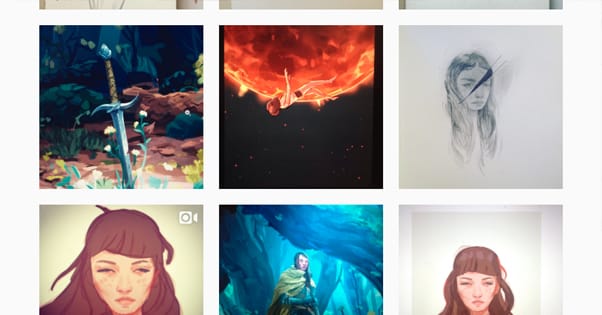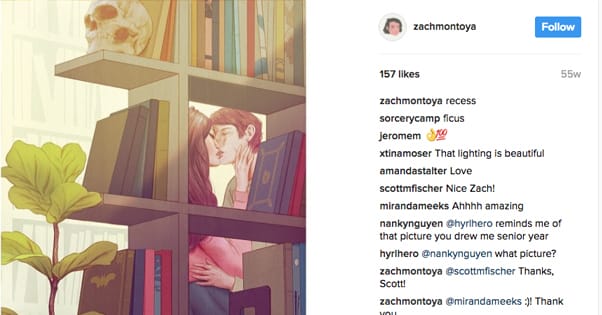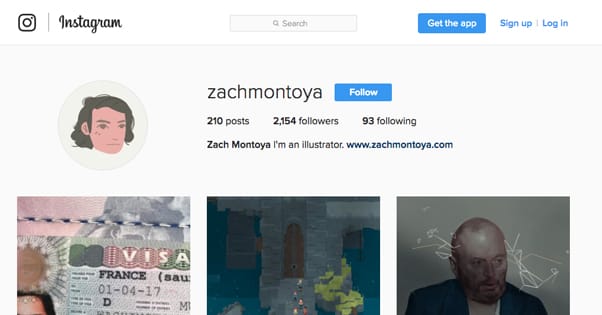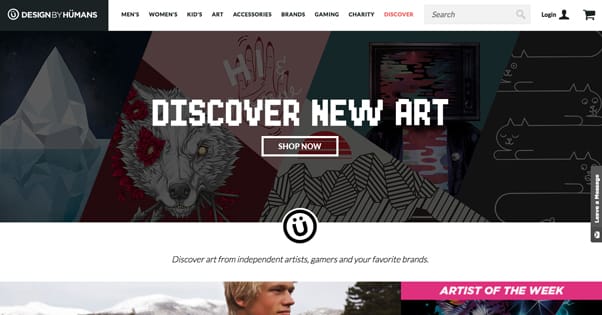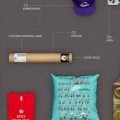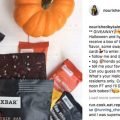Instagram was initially created as a social photo sharing site for mobile users, something of a semi-transient hub for temporary moments saved for posterity. It has since grown large, been picked up by Facebook, and expanded into quite the destination for people of all sorts. Casual users, businesses, artists, marketers, and a whole lot else besides have all picked up the network and use it to great effect.
At first glance, you might not think of it as a hub for artists. Artists often need their own portfolio websites, their profiles on DeviantArt, Pixiv, Behance, ConceptArt.org, and others. Even Pinterest is more of a hub than Instagram, until you look deeper into it.
Instagram has some great benefits for artists, though. It’s very community-focused and one of the least marketer-invaded social networks out there. It’s not made for artists or for sales, so it doesn’t have features like DeviantArt’s sell-a-print function, but it’s a great hub for showcasing graphics. It’s also relatively easy to use, so long as you don’t intend to dig into the deeper marketing tools other sites have available to them.
As an artist, how can you use Instagram both to promote your art and sell it?
Post Plenty of Art
The key to just about every social media platform out there is activity. The more art you post, and the more frequently you post it, the more exposure you’re going to get. All of the standard tips for Instagram marketing apply as well.
Since I’ve written extensively about them in their own posts, I’ll summarize here:
- Post as frequently as possible while maintaining consistency. If you can post every day, by all means, do so. If you have a backlog and can post every day for a month, but run out and will be then limited to once a week, maybe stagger out your posts to once a week to begin with, to stretch the backlog.
- Focus on your art. Treat your Instagram account like a business profile or portfolio. If you’re sharing digital art, don’t mix it in with selfies. If you’re sharing photography, don’t include random doodles. It’s a portfolio that showcases what you do professionally, and some behind the scenes work in progress. For the doodles, selfies, and random snaps, you can make a personal account as well.
- Make a list of relevant hashtags, both extremely popular and more niche-relevant tags, and use a mixture of both in each post. You don’t necessarily have to use all of the space in every post for tags, but you should use a mixture of tags. For example, tags about the style of art, the materials used, the characters or people, the scenery, and other elements of the image all work well.
- Keep notes on what posts do well and what elements of those posts might contribute. The time of day you posted, the style of the post, the caption, the hashtags, any influencers tagged in the description; these can all have an effect. You can use these notes to try to replicate your success in the future.
- Consider partial shares. In order to more effectively funnel traffic off of Instagram and to your more monetized portals, you can share cropped or zoomed versions of your art. Share just enough to intrigue and get people to click through to see the full version. You don’t have to opt for this strategy, but it can work surprisingly well.
Every image you post is an opportunity to get more followers, get more comments on your art, and channel people through your monetization routes. More on that later.
Engage with the Community
There are three main ways you can engage with the community on Instagram; comments on your art, comments on posts from other artists, and comments from aggregators.
Comments on your own art are going to be your primary source of engagement. Instagram is known as the social network with the highest engagement rates, but what they don’t tell you is that a lot of that engagement is going to be in individual conversations. People on Instagram don’t tend to leave a comment and disappear forever; rather, they’re happy to shoot messages back and forth as long as there’s a natural conversation taking place. This means it really pays to watch your messages and your comments, and respond to them as you get them. You’ll engage with your followers and they’ll get to know you, which means they’ll find more meaning in the content you post, and they’ll be more likely to comment again.
Comments on other artist posts will help you network with the artist community on Instagram. You help get your name, your style, and your objectives out there. Artists aren’t really in competition with each other any more; there’s plenty of demand, and the days of elitist gallery gatekeepers are pretty well over. Networking is how you open up opportunities beyond web sales, and those relationships start by finding each other and commenting on the art you each post. Just browse the styles of art you like and find something nice to say about what you see, it’s that easy.
Finally, aggregators are an interesting quirk of Instagram. Some accounts like to do nothing but build an audience and share content from the artists they like. You can build a relationship with these aggregators and get your content shared with attribution, to a larger audience than what you might otherwise be able to reach. It’s a good way to get more traffic and more followers.
Determine Monetization
Instagram is a social network, but at the end of the day, you still want to make money. There are a few ways you can do this, and chances are you should put most or all of them into play.
Instagram does not have a native way to sell your products, services, or artwork. You can’t use it to license out your art, nor can you sell product directly through it. You can work out commission details through direct messages, but that’s about it. Instead, you have to use one of these alternative methods.
1: A Personal Website. Most artists will have their own personal gallery and portfolio website, with details for ways you can purchase their art. It’s good to have a link to this site in your main Instagram description, so anyone who follows you can see it and easily click through to it. In order to encourage people to click it, you can use the partial image idea from up above, or you can simply mention you have more art there that isn’t posted on your Instagram. Of course, you need to keep it up to date and active as well; people who follow your personal site as well as your Instagram should be getting extra unique value out of it.
Your personal site can also double down on the other monetization methods, with links to shops and commission information. A page about where to buy art, a page about commissions, and a page about tertiary products all work.
One thing to note is that Instagram works for more than just digital art. When we talk about art most people think digital drawings, paintings, or photography. However, traditional art, sculpture, and even handmade products like what you would find on Etsy all work as well. If you’re a knitter and you make scarves to sell, you can post pictures of models in those scarves with links to where they can be purchased on Etsy to make sales quick and easy.
2: A Patreon Account. Patreon is one of the leading monetization methods for artists and musicians, as well as entertainers of various sorts on the internet today. The model is pretty simple; people can pledge an amount of money per whatever structure you have set up, generally either per month or per completed product. Some artists and comic creators will do “per new page of the comic” while others will do a flat monthly pledge. Patreon takes a small cut, and the artist gets the rest.
You can use Instagram to rep your Patreon account and get people to sign up to support you. I recommend the monthly version, so you have a steady balance to your income; you can get per-commission and per-product income elsewhere, but the monthly income stream will support you during dry seasons and when you have unexpected emergencies that prevent you from producing as much art as you might prefer.
Patreon also has a way you can post directly to their site, and you can hide the content so that only people who pledge can see it. In this manner, you can create patron-only content and further encourage users to support you to see more. Anyone who isn’t a patron can see that you’ve posted, but they can’t see what. You can combine this with Instagram by posting snips of the art you’re creating for Patreon, with a Patreon logo indicating that if they want to see more, they should pledge support. This is especially common amongst adult artists who censor their images with the Patreon logo, though it’s certainly not limited to that particular industry.
3: Print on Demand Sales. There are many, many sites out there that allow you as an artist to upload designs and have products printed on demand whenever someone wants to buy one. Sites like Design By Humans, Society6, and Redbubble all serve this purpose.
They allow you to upload an image, and they create everything from t-shirts and posters to iPhone cases and mugs. They all work in roughly the same way, where users can buy a design on an item and pay X amount of money, the site takes a commission, and the artist gets the remainder. Different sites have different commission amounts, so make sure to do some research and figure out which will be the most profitable to you.
4: Product Stores. I mentioned the Etsy example above, but you can do the same thing with any storefront you run. It works for a physical retail location, it works for Etsy, it works for eBay, it works for Amazon, and it works for a personal website with an eCommerce storefront set up. Any time you have physical products of your own to sell, be it prints, shirts, or handmade goods, you can promote them on Instagram.
5: Commissions. Artists thrive on commissions and, to a lesser extent, on licensing. Photographers in particular do well with licensing; take a ton of pictures and allow businesses to pay you to use them, just like stock photography. In fact, you can take your pictures and promote entire sets with a collage image. Post 50 photos on ShutterStock and create a collage of 5 of them with text about where the rest can be found and purchased, and you’re good to go. Of course, stock photography isn’t a lucrative business unless you have hundreds of thousands of pictures, so maybe that’s not as easy as it sounds.
For actual one on one commissions, all you need to do is periodically make a post about how you’re open for commissions. The most typical example I see is a collage of a few different styles or products, with the associated price points. Show a quick sketch for $10 in one corner, a more complete panorama in another for $30, a detailed and finished product front and center for $50, or whatever prices you actually want to set. Post that collage and elaborate on the limitations and pricing in the description. Link to a way to contact you – or several, if you’re fine dealing with people through direct messages, email, and other options.
6: Integrated Commerce. I know I said Instagram doesn’t have a way to sell directly through the site, and that’s true, they don’t. However, some enterprising companies have set up integrations with Instagram such that they’re able to pull your images directly and manages a storefront for you. One such example is Spreesy, which takes a small commission and sets up a storefront of the products you post.
I recommend setting up as many options as you can, so you have as many sources of income as possible. Make each post go as far as it can!

